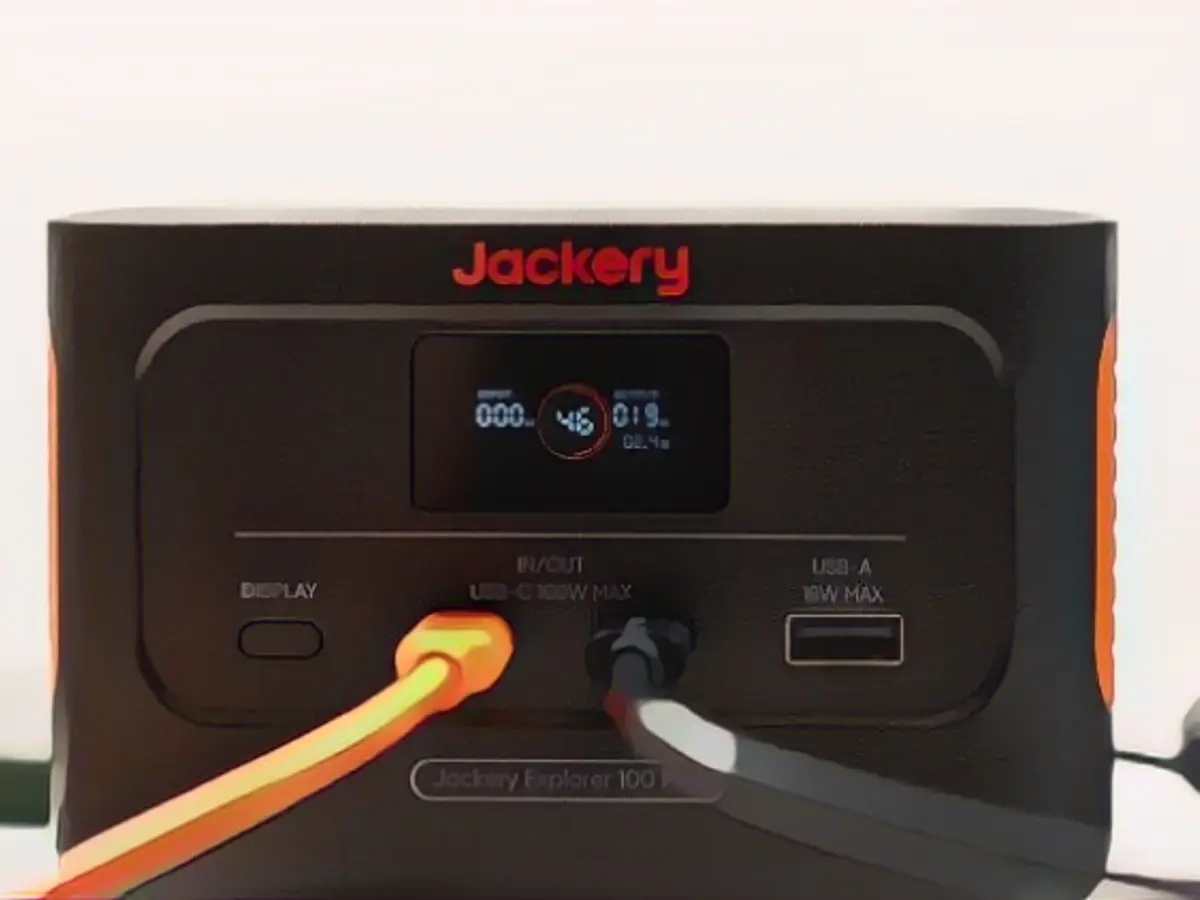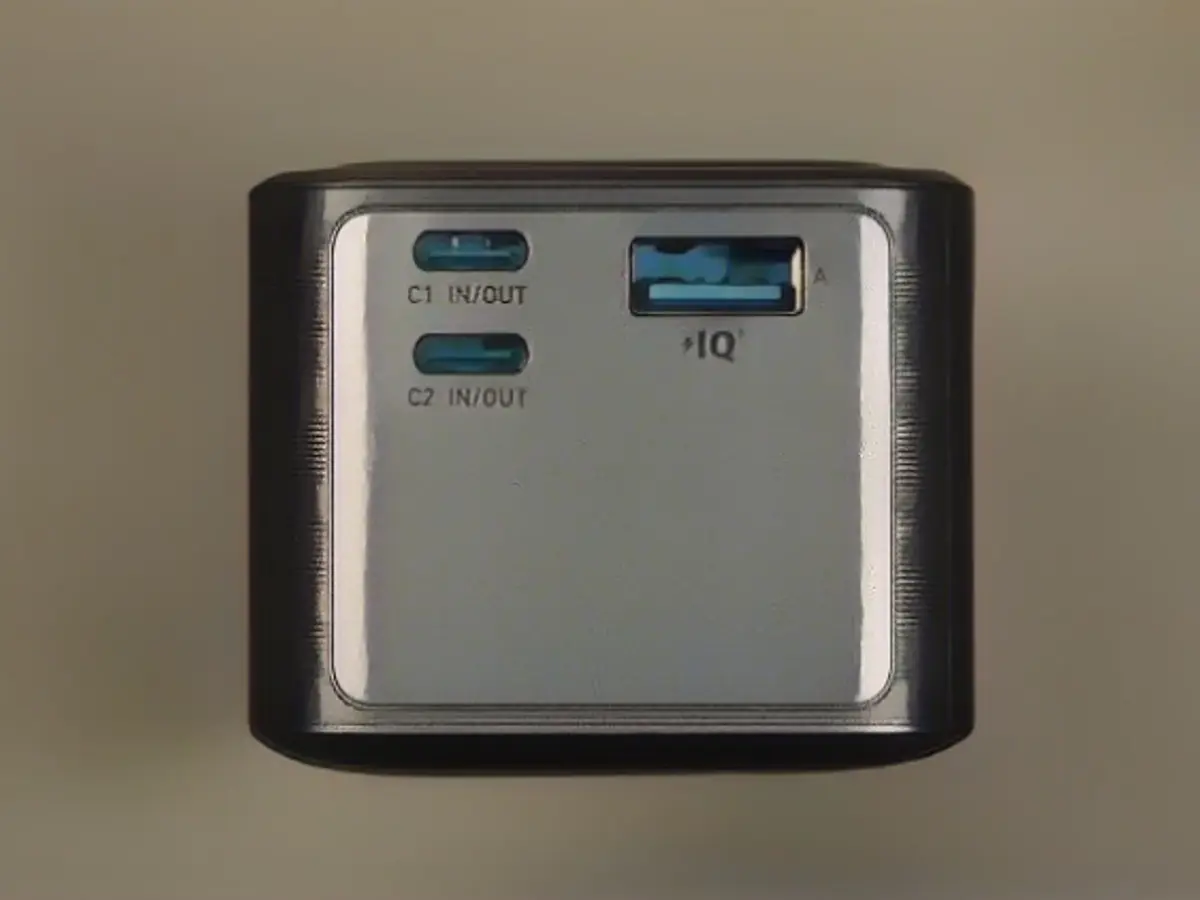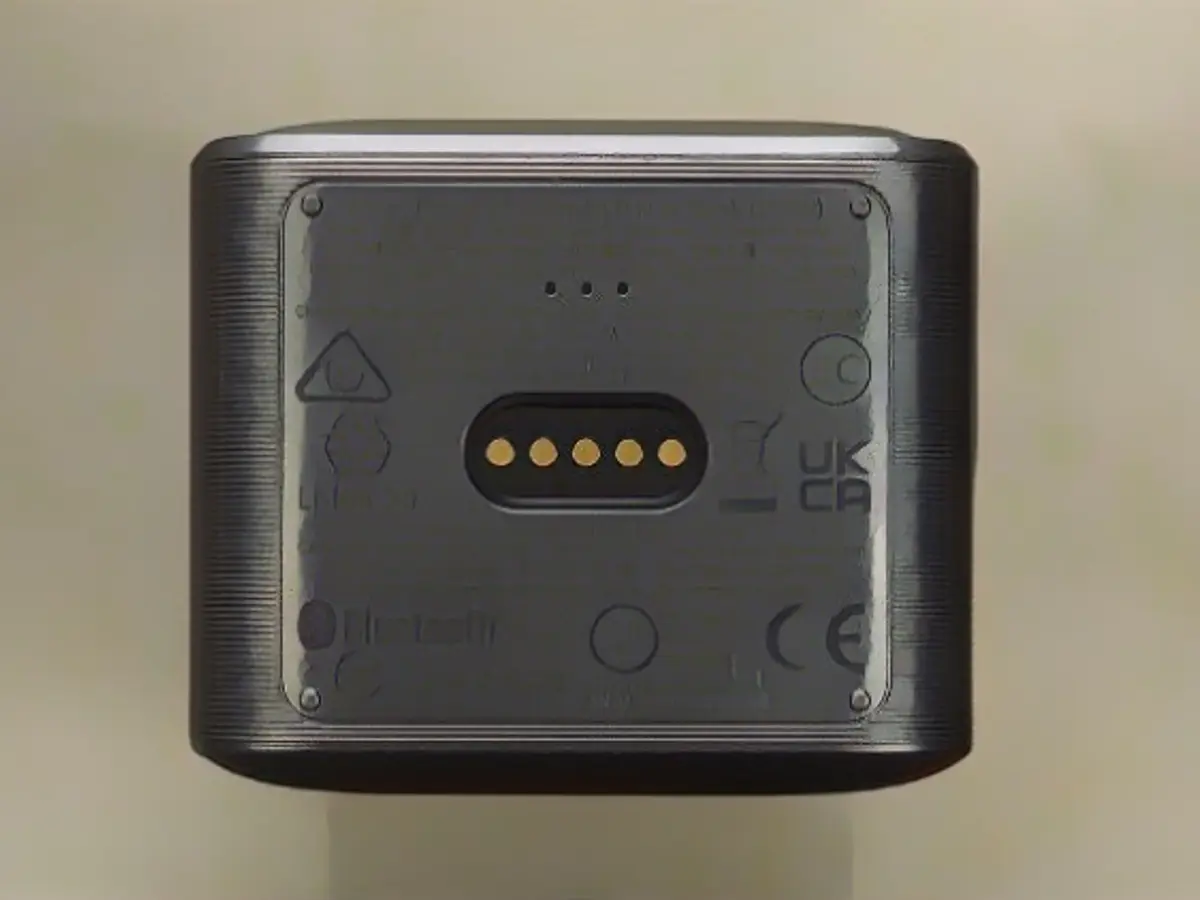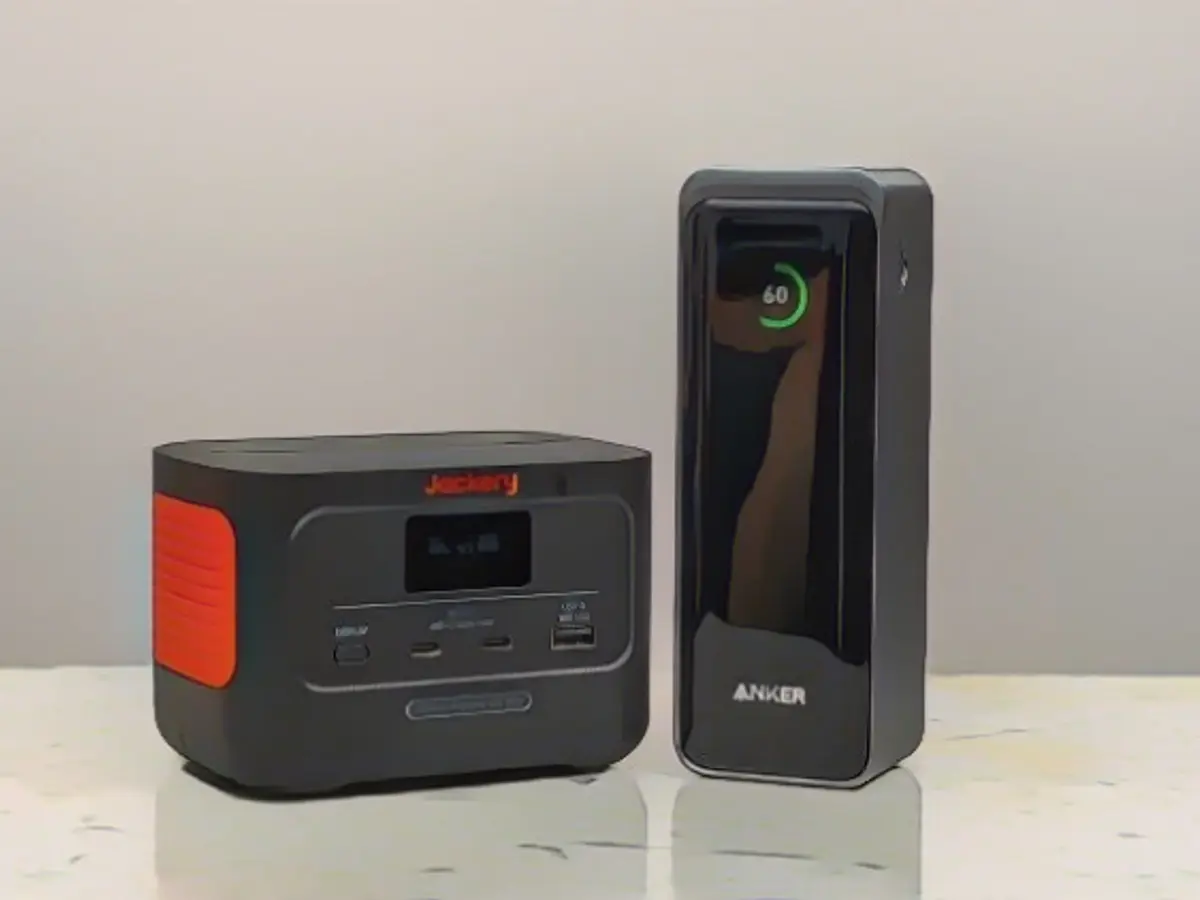Why many power banks have around 27,000 mAh
Powerful power banks that allow you to charge your laptop and smartphone at the same time are ideal when traveling. ntv.de explains why the capacity of the battery packs is usually no more than 27,000 mAh and introduces two top devices from Anker and Jackery that have been tested in practice.
A power bank is an ideal travel companion for charging your smartphone, laptop, camera or other mobile devices on the go - preferably at the same time. However, there are obviously limits to the capacity of these battery packs, as the values are usually barely higher than 27,000 milliampere hours (mAh). This is not due to technical reasons, but there is a good reason for it.
Up to 100 Wh in airplane hand luggage
In order to be allowed in hand luggage on an airplane, the IATA guidelines stipulate that the rated output of a power bank must not exceed 100 watt hours (Wh). With a standard battery cell voltage of 3.7 volts (V), this corresponds to a capacity of approximately 27,000 mAh. The formula for conversion is mAh x V ÷ 1000 = Wh.
You are usually allowed to carry two battery packs that comply with the guideline. However, these are not universally valid regulations; the rules may differ from airline to airline. It is therefore best to find out before you start your journey before you have to leave your mobile filling station at security. Devices with higher capacities may also be permitted. Lufthansa, for example, may (!) approve power banks up to 160 Wh on request.
Solo presentation at security check
As a general rule, you should remove large battery packs from your baggage at the security checkpoint and place them in the conveyor belt box without a cover to avoid problems. It is important that you can prove that the capacity does not exceed the limit value if the value is not stated on the device. If in doubt, find out what the airline wants to see before you check in.
Battery packs have no place in checked baggage. The batteries can catch fire in the event of a short circuit. This would be noticed in the cabin and the cabin crew know how to deal with it. A fire in the luggage compartment, on the other hand, could have fatal consequences.
In general, you should therefore avoid cheap products when it comes to rechargeable batteries; a short circuit in high-quality branded devices almost never occurs. ntv.de has tested two brand new power banks that have just under 100 Wh and can be carried in hand luggage on the plane. The mobile charging stations are of course also practical when traveling by train, car or on two wheels. With their relatively low weight, they can also be carried in your rucksack when hiking.
Jackery Explorer 100 Plus

The Explorer 100 Plus is available for around 150 euros. Because the device looks like a cute miniature version of its large portable charging stations, Jackery calls it a power station. However, these have much higher capacities, are much more powerful and also have AC sockets, among other things.
The Explorer 100 Plus, on the other hand, only has USB ports in its 12.6 x 8.65 x 8.7 cm small housing, which are appropriate for its tasks. Two of these are USB-C sockets that can charge other devices with up to 100 watts (W), while a USB-A output delivers a maximum of 18 W. Together, the USB-C ports can output up to 110 W, with the combination of USB-C plus USB-A, 118 W is possible. All three sockets together deliver 128 W.
100 W in or out
The 965 g power bank can be charged via SB-C with up to 100 W, including with a compatible solar panel. The Explorer 100 Plus can draw a maximum of 60 W from the car connection with an optional adapter. A mains adapter is not included in the scope of delivery. Under optimum conditions, an empty battery is fully charged in 1.8 hours.
A small display above the outputs shows how much power the device is drawing or emitting. It also shows how much capacity is left and approximately how long the reserves will last.
The display button can be used to light up the screen permanently if desired. According to the instructions, holding it for a long time activates the energy-saving mode. This is somewhat misleading. In fact, this deactivates the automatic function that switches off the power bank if less than 2 W is emitted for twelve hours. You need this function if you want to charge earphones, for example, which consume less power.
Well protected and durable
The Jackery Explorer 100 Plus doesn't have any special refinements to offer, but why should it? It does what is required of it not only reliably, but also safely. Among other things, it pauses automatically if temperatures are too high or too low and is protected against overvoltage, overcurrent and short circuits. The housing is flame-retardant and can withstand a number of impacts (class 9).
You can also enjoy the device for a long time as it has a LiFePo4 (lithium iron phosphate) battery, which has a lifespan around six times longer than conventional rechargeable lithium-ion batteries. Jackery states that the battery still has 80 percent capacity after 2000 full charge cycles.
Anker Prime 27,650 mAh power bank

The Anker Prime 27,650 mAh power bank costs around 190 euros. But for this you get a battery pack that is significantly more compact than the Jackery Explorer 100 Plus at 16.17 x 5.70 x 4.97 cm. The form factor makes it easier to stow in hand luggage and at just under 680 g it is also considerably lighter. Technically, the power bank with its attractive metallic glass look also has a lot to offer.
First of all, there is the battery, which is a lithium polymer battery. Although this technology allows for a particularly compact design and high performance, it apparently does not enable such long-lasting energy storage as LiFePo4. Anker does not provide any information on this.
Trimmed for maximum performance

However, the manufacturer really pushes the limits when it comes to performance. Because 27,650 mAh is the equivalent of 102.3 Wh, which is above the maximum permitted value for on-board luggage. Anker actually states the rated power as 99.54 Wh. This is presumably due to losses; no battery in the world converts 100 percent of its energy.
The connections are also powerful. Two USB-C sockets can deliver up to 140 W each, while the USB-A output is said to deliver up to 65 W. This also works simultaneously. If both USB-C ports are active, one can deliver a maximum of 140 W and the other 100 W. All three sockets together achieve a maximum output of 250 W: 140 + 92 + 18 W.
The Anker Prime 27,650 mAh itself can be charged from 0 to 100 percent in just 37 minutes with up to 170 W if two powerful power sources are connected at the same time. Alternatively, you can buy a 100-watt charging station for 60 euros, on which the power bank is charged via pins. There are various protective mechanisms to ensure that nothing goes wrong with the high power levels, including measuring the temperature up to three million times a day.
But the power bank can also take it easy. To ensure that it does not switch off at less than 2 watts, it also has a corresponding function to keep it running. A multicolored display shows how much power the outputs are delivering or how much the power bank is being charged with. As with the Jackery Explorer 100 Plus, both are possible at the same time. The screen also shows the remaining time and capacity, temperature and battery health.
Bluetooth and app
But the Anker 27,650 mAh power bank can do even more. If you press the large on/off button on the right-hand side once, you have the option of pairing the device with a smartphone via Bluetooth. You can then also see all the statistics in the associated app.
You can also activate optimized charging for the battery pack and connected devices. This means that the batteries are recharged at a reduced power level at set times to extend their service life. You can also display how often you can still charge devices, but you have to enter the values yourself. All this is nice to have, but you don't really need it. On top of that, the Bluetooth connection costs energy.
Technology tests have revealed that the maximum capacity of power banks allowed in airplane hand luggage is around 100 watt hours, which is approximately 27,000 milliampere hours (mAh) due to IATA guidelines. During your journey, your smartphone battery might drain faster than expected, making it important to carry a power bank that can charge both your smartphone and laptop simultaneously. Notebooks are one of the mobile devices that can be charged using a high-capacity power bank.
Source: www.ntv.de








